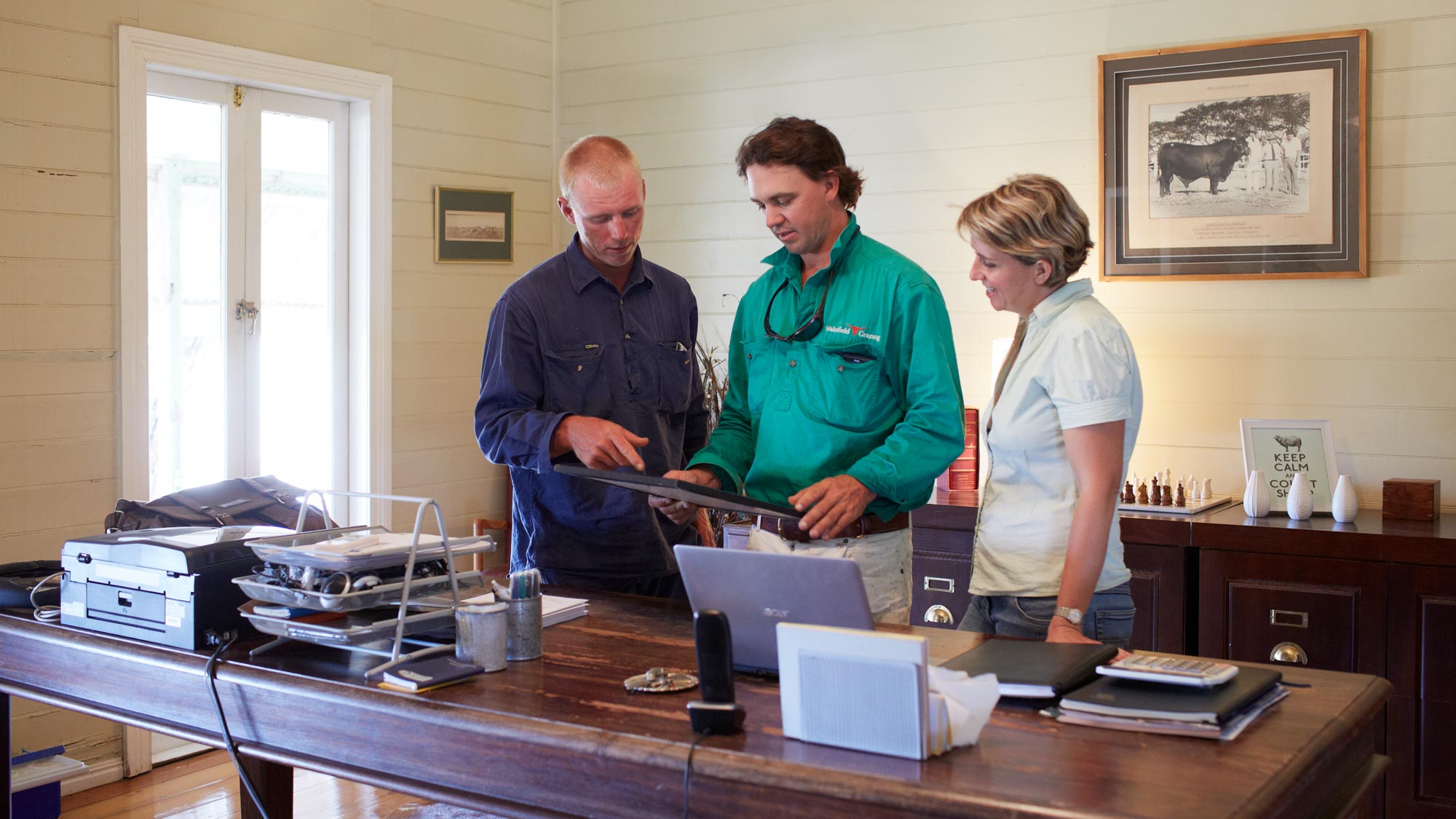Chapter 1.5 Quantify risks and develop a risk management plan
Chapter 1.5 Quantify risks and develop a risk management plan
Background information
Sheep enterprise risks include season, price, human resources/labour, animal health and welfare, biosecurity, demographic/social, environmental, market and economic.
The degree to which any one of these is a threat to a business will vary according to location, production system, financial position, farm size, business resilience, and so on. It is critical that each business does its own risk assessment to develop a risk management plan.
At a glance
- Assess the likelihood of risks and their potential impact on your business.
- Identify strategies to best manage risks or threats.
- Regularly review your risk management policy.
Risk management is about identifying and mitigating key production and business risks. When working through this process it is important to recognise that we might have more control over production and business risks than we initially think.
It is easy to get caught up in thinking we can’t control the weather and we can’t control commodity prices. The more empowering approach is to recognise what we can control. We can control our enterprise choice, we can control our genetic selection, we can control our operational timeliness, we can control pasture agronomy and we can control how much summer rainfall we conserve or utilise. All of these factors that are within our control contribute to enhancing business performance.
A farm business risk assessment template (tool 1.11) is provided to help identify the major risks. It covers the 12 most common areas of risk and asks the questions you should answer when considering these risks.
Planning to manage risk
Because drought is common to all sheep producers, it is used in tool 1.11 as an example of how the principles should be applied. Many of the other risks assessed in tool 1.11 require a more subjective approach, but the same principles (likelihood and potential impact) apply.
SIGNPOSTS
WATCH & LISTEN
Lessons industry experts have learned over the years and how you can improve the resilience in your business.
Various virtual producer case studies highlight how livestock producers have overcome risk.
READ
Recent droughts across Australia have demonstrated the dramatic effects that climate variability can have on farm businesses and households. Here ABARES provides some insight into these issues by examining the effects of recent climate variability on Australian farms.
Resources to help livestock producers adapt to Australia’s increasingly variable weather and climate, which has major implications for production.
Risk management is an essential part of all aspects of farm management and key to ensuring the wellbeing of growers, their families and their businesses.
USE
A biosecurity action plan will help you identify and prioritise the implementation of biosecurity practices relevant to your property, assess the biosecurity risks on your farm, and take steps to address them.
This template is designed to help prioritise the operating risks in your farm business.
A decision support tool that helps producers assess current seasonal conditions and the likely range in pasture availability and livestock performance.
Developed to assist the industry to improve climate risk management. It uses historical weather records to analyse rainfall, temperature, solar radiation, pan evaporation vapour pressure at individual locations.
ATTEND
Activities held in each state to improve sheep management and business skills in a range of scenarios.
A two-day financial and business management training workshop for all livestock producers. The aim is to enhance producer knowledge and skills in basic financial and business management to improve business efficiency and profitability.
A one-day workshop that gives producers a broad understanding of the environment in which they operate and the core principles behind successfully maintaining grazing land condition and long-term productivity.
Designed for producers to develop a thorough understanding of the grazing land environment in which they operate to strategically manage their grazing business to optimise land condition and productivity in the long-term and begin developing grazing land management plans for their properties.






